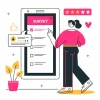
Waiting Time Feedback Template: Reducing Patient Frustration
Reducing patient frustration is a critical component of patient care in any medical facility. Waiting times can significantly impact a patient’s experience, satisfaction, and overall perception of the healthcare system. As part of an ongoing effort to enhance patient experience, healthcare providers must implement effective feedback systems to gauge and improve waiting times.
What is Patient Frustration?
Patient frustration refers to the negative emotions and dissatisfaction patients experience when their expectations are not met during healthcare interactions. This often arises from long waiting times, inadequate communication, and a perceived lack of empathy from healthcare staff. Addressing these issues is crucial for maintaining a positive patient experience and ensuring high levels of patient satisfaction.
Causes of Patient Frustration
The primary causes of patient frustration include:
- Long Waiting Times: Extended waiting periods can lead to increased stress and anxiety, negatively impacting the overall patient experience.
- Poor Communication: Lack of clear information about delays or appointment changes can exacerbate patient frustration.
- Perceived Lack of Empathy: Patients may feel undervalued or ignored if their concerns are not addressed promptly and compassionately.
Creating a Waiting Time Feedback Template
A well-structured feedback template can provide valuable insights into patient experiences and help identify areas for improvement. Here’s a step-by-step guide to creating an effective waiting time feedback template.
1. Identifying Key Feedback Areas
Focus on the following key areas to gather comprehensive feedback:
- Arrival and Check-In Process: How efficient and welcoming was the initial check-in process?
- Communication: Were patients informed about expected waiting times and delays?
- Waiting Environment: How comfortable and pleasant was the waiting area?
- Actual Waiting Time: How long did patients wait compared to the time they were told to expect?
2. Implementing the Feedback Template
- Digital Forms: Use digital platforms such as online forms or tablets in the waiting room for real-time feedback collection.
- Paper Surveys: For patients who prefer traditional methods, provide paper-based surveys that can be filled out anonymously.
- Mobile Apps: Integrate feedback options into your healthcare facility’s mobile app, allowing patients to provide feedback at their convenience.
3. Analyzing Feedback
Once the feedback is collected, it is crucial to analyze the data to identify patterns and areas that require improvement. Here are some methods to analyze feedback:
- Quantitative Analysis: Use statistical methods to quantify patient satisfaction levels and waiting times.
- Qualitative Analysis: Review open-ended responses to understand the context and sentiment behind patient feedback.
Strategies to Reduce Waiting Time and Patient Frustration
Reducing waiting times and patient frustration requires a proactive and systematic approach. Here are some strategies that healthcare providers can implement:
1. Efficient Scheduling
- Automated Reminders: Use automated reminders for appointments to reduce no-shows and ensure the timely arrival of patients.
- Staggered Appointments: Schedule appointments in a staggered manner to prevent overcrowding and ensure a steady flow of patients.
2. Real-Time Updates
- Digital Displays: Use digital displays in waiting areas to provide real-time updates on wait times and inform patients of any delays.
- Mobile Notifications: Send text messages or app notifications to update patients about their wait times and any changes.
3. Patient Flow Management
- Triage Systems: Implement triage systems to prioritize patients based on urgency, reducing wait times for critical cases.
- Staff Training: Train staff to manage patient flow efficiently, minimizing bottlenecks and delays.
4. Waiting Area Improvements
- Comfortable Seating: Ensure the waiting area has comfortable seating and adequate space.
- Entertainment and Amenities: Provide entertainment options like TVs, magazines, and Wi-Fi, along with amenities such as water and snacks.
5. Feedback Integration
- Regular Review: Regularly review feedback and implement changes based on patient suggestions and complaints.
- Transparent Communication: Inform patients about steps taken to reduce waiting times and improve their experience.
Conclusion
Reducing patient frustration through effective waiting time management is crucial for enhancing the patient experience and building trust in the healthcare system. By implementing a comprehensive feedback template and adopting strategies to minimize waiting times, healthcare providers can significantly improve patient satisfaction and loyalty.
Frequently Asked Questions
How does waiting time affect patient satisfaction?
Waiting time is a significant factor in patient satisfaction; long waits can increase anxiety, diminish trust, and lead to negative word-of-mouth, all of which contribute to decreased patient satisfaction. Focusing on ways to improve patient satisfaction can help address these issues.
How can feedback templates help reduce patient frustration?
Feedback templates help healthcare providers identify areas where they can improve the patient experience. By addressing patient concerns and implementing suggested changes, providers can reduce frustration and enhance overall satisfaction.
What strategies can healthcare providers use to reduce waiting times?
Healthcare providers can use various strategies to reduce waiting times, including efficient scheduling, real-time updates, patient flow management, waiting area improvements, and regular feedback integration.
How should feedback be collected from patients?
Feedback can be collected through various channels, including digital forms, paper surveys, and mobile apps. The chosen method should be convenient for patients and encourage participation.
Enhance Patient Care and NABH Compliance with LazyMonkey
LazyMonkey is your all-in-one solution for improving patient care, retaining more patients, and meeting NABH standards. Our powerful QR-based feedback tool enables you to capture real-time insights from patient feedback, discharge surveys, staff and doctor evaluations, and clinical research, while also streamlining inter-departmental communication.
Transform your healthcare facility today - reach out to us at hello@lazymonkey.in, or request a demo here!
Elevate Your Restaurant Experience with LazyMonkey
LazyMonkey’s QR-based feedback system helps you gather real-time insights from customers, track satisfaction levels, and enhance the dining experience. Get instant feedback on your menu, service, and ambience, and make data-driven improvements to boost repeat customers and reviews.
Improve your restaurant today – reach out to us at hello@lazymonkey.in, or request a demo here!
Empower Student Engagement and Campus Improvement with LazyMonkey
LazyMonkey offers a seamless way to gather student feedback, track satisfaction, and enhance campus life. From course evaluations to dorm feedback, our QR-based solution makes it easy to capture valuable insights and improve student retention.
Upgrade your university experience – contact us at hello@lazymonkey.in, or request a demo here!
Streamline Feedback and Drive Performance Across Your Enterprise/Franchise with LazyMonkey
Whether you manage one or multiple locations, LazyMonkey’s QR-based feedback system helps you gather real-time employee and customer feedback. Improve operational efficiency, track satisfaction, and make data-driven decisions to enhance brand consistency and growth.
Transform your franchise today – reach out to us at hello@lazymonkey.in, or request a demo here!
Enhance Customer Satisfaction and Service Standards in Banking with LazyMonkey
LazyMonkey empowers banks to capture real-time feedback from clients across branches. Improve customer experience, assess service quality, and ensure regulatory compliance with our QR-based solution, helping you retain clients and meet banking standards.
Elevate your bank’s customer care – contact us at hello@lazymonkey.in, or request a demo here!
Boost Customer Engagement and Mall Satisfaction with LazyMonkey
LazyMonkey’s QR-based feedback tool enables you to collect feedback from shoppers, track satisfaction, and enhance the mall experience. Gather insights on store services, cleanliness, and entertainment to create an unmatched customer journey.














